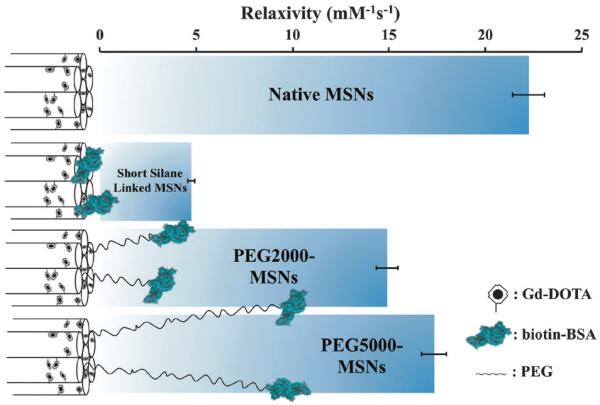Fig. 2.
Schematic summary of particle relaxivity tuning through surface chemistry. Non protein capped Gd–DOTA MSNs have open pores, good water accessibility and relaxivities of 22.25 ± 0.83 mM−1 s−1 in water; the direct anchoring of BSA via a short silane linker leads to a dramatic reduction in relaxivity (4.74 ± 0.18 mM−1 s−1); in buffering this biomodification away from the surface with a linker, high relaxivity is recovered (14.90 ± 0.56 mM−1 s−1 for PEG2000, 17.34 ± 0.65 mM−1 s−1 for PEG5000). Error bars here represent cumulative errors arising from triple repeats of relaxivity assessment (across at least three different sample concentrations at 7 T and 20 °C) and ICP quantification.

